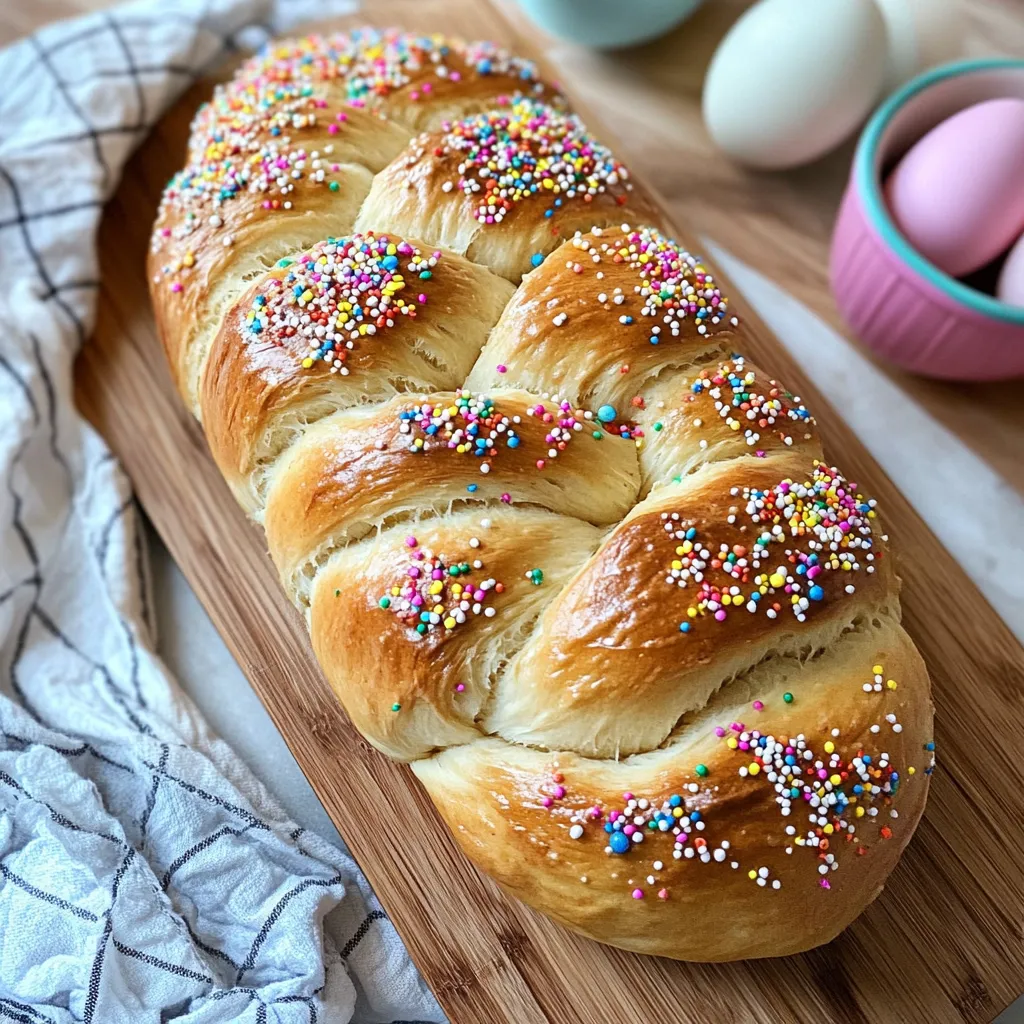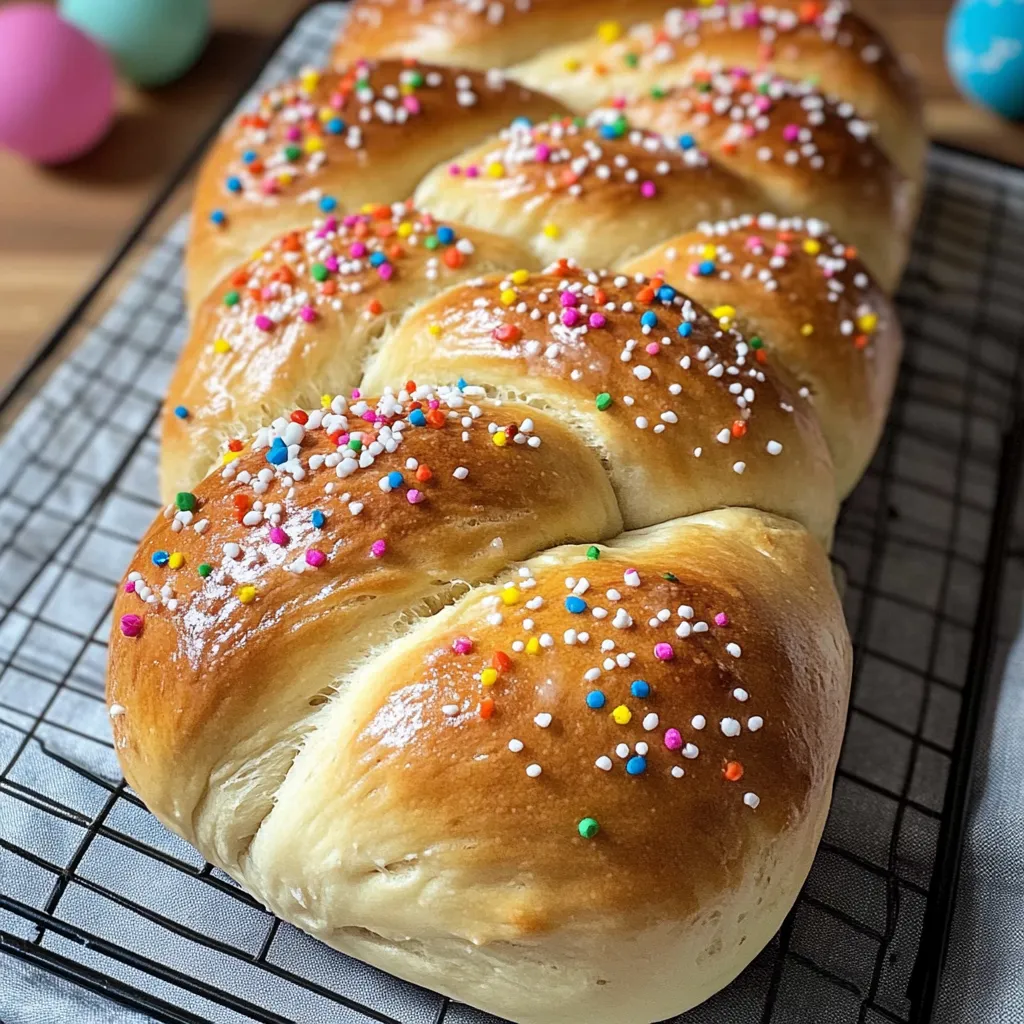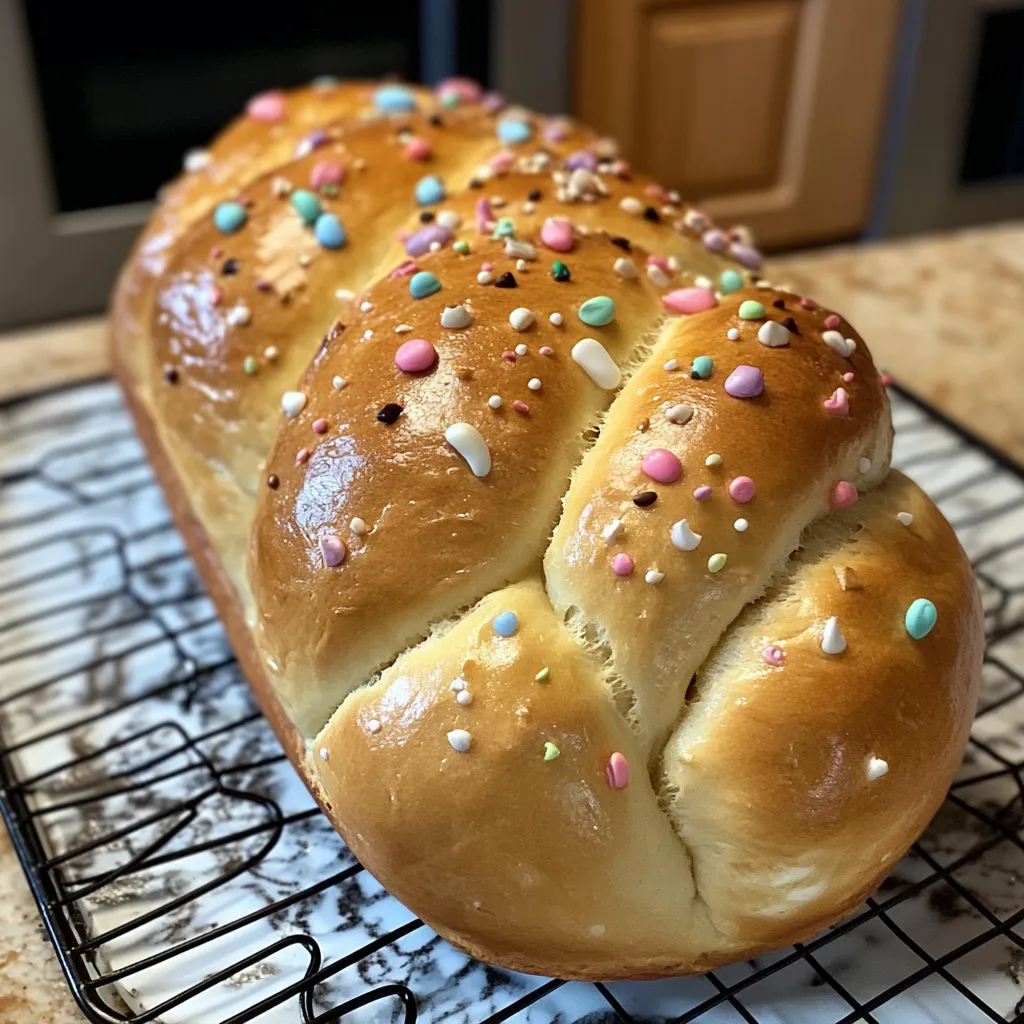 Pin it
Pin it
This traditional Easter bread recipe brings the perfect balance of sweetness and fluffiness to your holiday table. The rich, buttery texture and subtle vanilla flavor make it an irresistible centerpiece that pairs wonderfully with your Easter feast.
I first made this Easter bread when hosting my first holiday gathering as a newlywed. The look on my mother in law's face when she tasted it told me this recipe would become our family tradition for years to come.
Ingredients
- Active dry yeast: Activates the rising process and creates that perfect fluffy texture
- Warm milk: Provides the ideal environment for yeast activation while adding richness
- Sugar: Feeds the yeast and adds subtle sweetness to balance the bread's flavor
- All purpose flour: Creates the perfect structure; choose unbleached for best results
- Salt: Enhances all flavors and strengthens the gluten structure
- Unsalted butter: Adds richness and tender texture; use European style for extra decadence
- Egg: Provides structure and golden color; look for pasture raised if possible
- Vanilla extract: Brings warmth and depth; choose pure extract rather than imitation
Step-by-Step Instructions
- Activate the Yeast:
- Combine warm milk around 110°F with yeast and sugar in a large bowl. The milk should feel warm to the touch but not hot enough to burn your finger. Let this mixture sit undisturbed for 5 minutes until it becomes foamy and fragrant which indicates your yeast is alive and ready to work its magic.
- Form the Dough:
- Add flour and salt to your activated yeast mixture then pour in the melted butter. Stir everything together until a shaggy dough begins to form. The dough will start pulling away from the sides of the bowl but still look somewhat rough at this stage.
- Develop the Gluten:
- Knead the dough on a lightly floured surface for a full 10 minutes. This step is crucial for developing the gluten which gives your bread its beautiful structure. The dough is ready when it feels smooth elastic and springs back when you press it with your finger.
- First Rise:
- Transfer your kneaded dough to a greased bowl turning once to coat all sides with oil. Cover with a clean kitchen towel and place in a warm draft free spot for 1 hour. The dough should double in size becoming puffy and light.
- Shape the Loaf:
- Gently punch down the dough to release air bubbles then shape into a smooth round loaf. Place on a parchment lined baking sheet and if desired brush with beaten egg and add traditional Easter decorations like dyed eggs or sprinkles.
- Bake to Perfection:
- Bake in a preheated 350°F oven for 35 to 40 minutes. The bread is done when it turns a beautiful golden brown and sounds hollow when tapped on the bottom. Let cool for at least 30 minutes before slicing to allow the structure to set.
 Pin it
Pin it
This bread always reminds me of my grandmother who would make similar loaves each Easter. She taught me to add the vanilla extract which wasn't in her original recipe but became our special touch that makes this bread uniquely ours.
Storing Your Easter Bread
Keep your Easter bread at room temperature in an airtight container or wrapped tightly in plastic wrap for up to 3 days. The bread stays remarkably fresh especially if you warm slices slightly before serving. For longer storage freeze well wrapped loaves for up to 3 months. Thaw completely at room temperature before serving or toast slices straight from frozen for a quick treat.
Festive Variations
Transform this basic recipe into something truly special with thoughtful additions. Try folding in golden raisins or dried cranberries during the final kneading for pops of sweetness throughout. For a more aromatic version add the zest of one lemon or orange to the dough. Many traditional Easter breads include whole dyed eggs pressed into the top before baking creating a stunning presentation that delights children and adults alike.
Serving Suggestions
Easter bread shines as part of a holiday brunch spread alongside savory dishes like frittata or ham. Slice it thickly and serve with honey butter for an extra special treat. For dessert try toasting slices and topping with mascarpone cheese and fresh berries. This versatile bread also makes exceptional French toast the next morning turning leftovers into a luxurious breakfast.
 Pin it
Pin it
Frequently Asked Questions
- → Can I use instant yeast instead of active dry yeast?
Yes, you can substitute instant yeast for active dry yeast. No need to proof it in milk; simply mix it with the dry ingredients.
- → How do I know when the dough has risen enough?
The dough will double in size and should leave an indentation when gently poked with your finger.
- → Can I add toppings to the bread?
Absolutely! You can sprinkle sesame seeds, slivered almonds, or even glaze with an egg wash for a shiny crust.
- → How should I store the bread once baked?
Store it in an airtight container or wrap it tightly with plastic wrap. It stays fresh for up to 3 days at room temperature.
- → What can I serve with this bread?
This bread pairs wonderfully with butter, jam, or even savory spreads like cream cheese.
